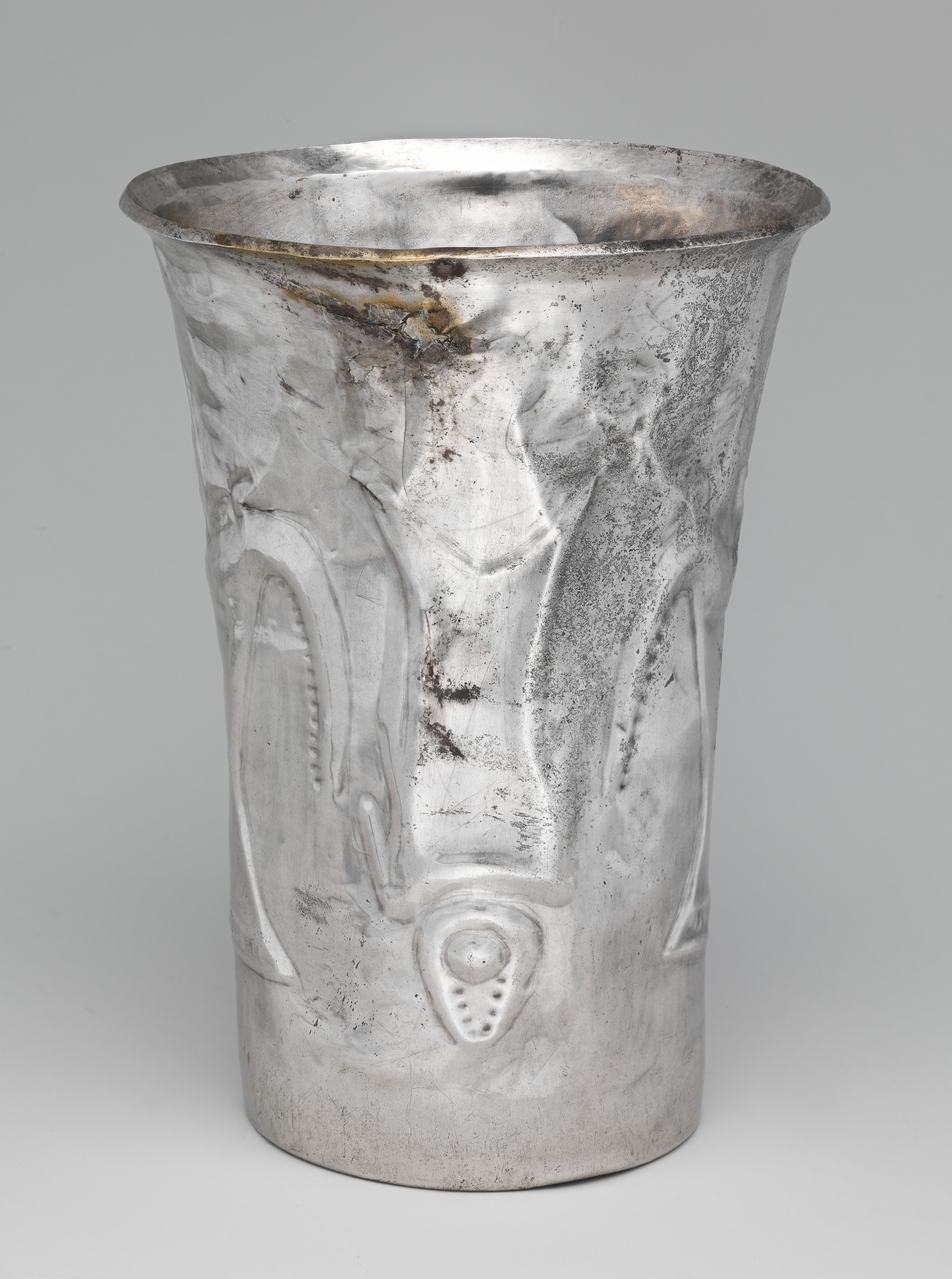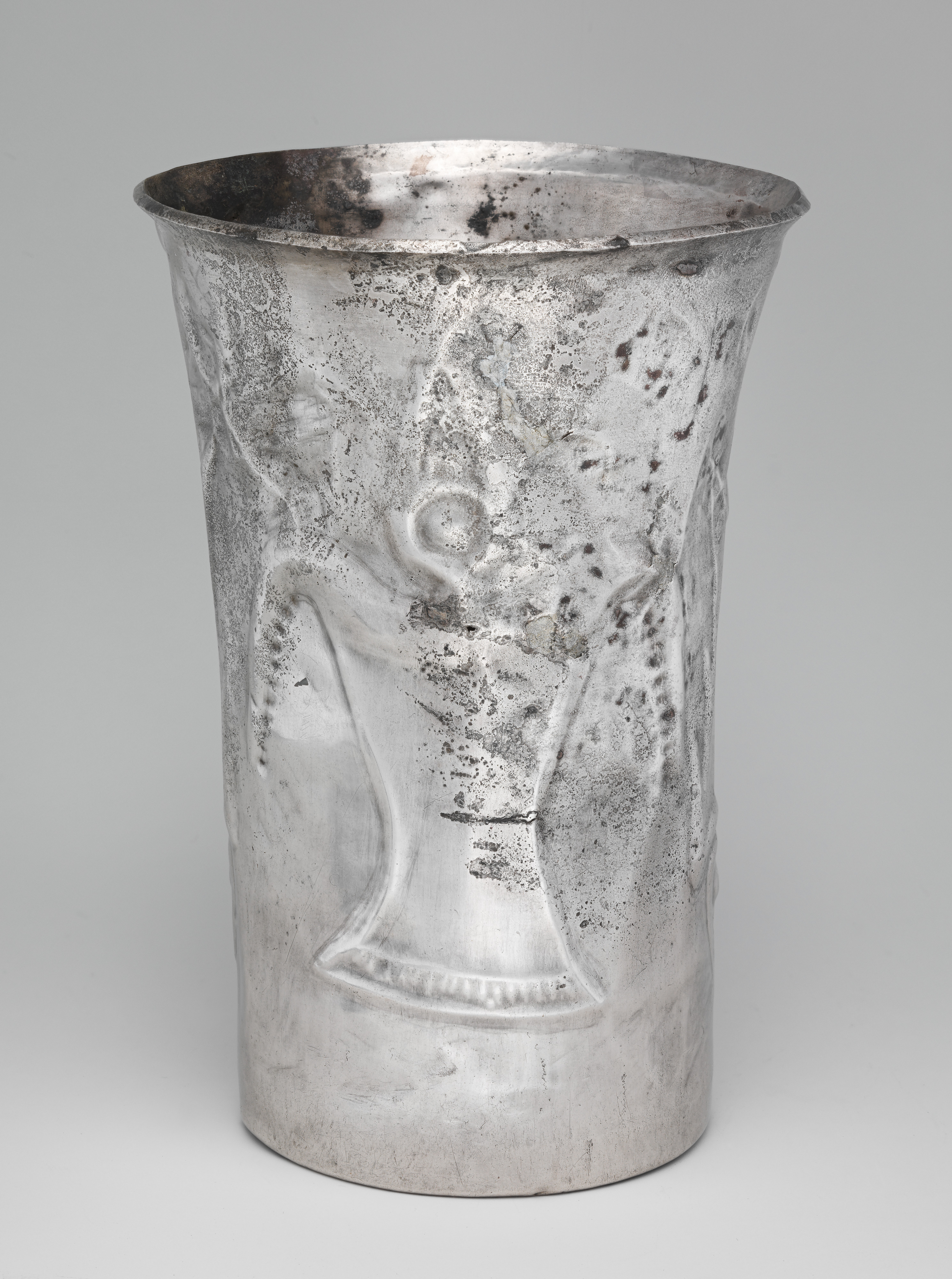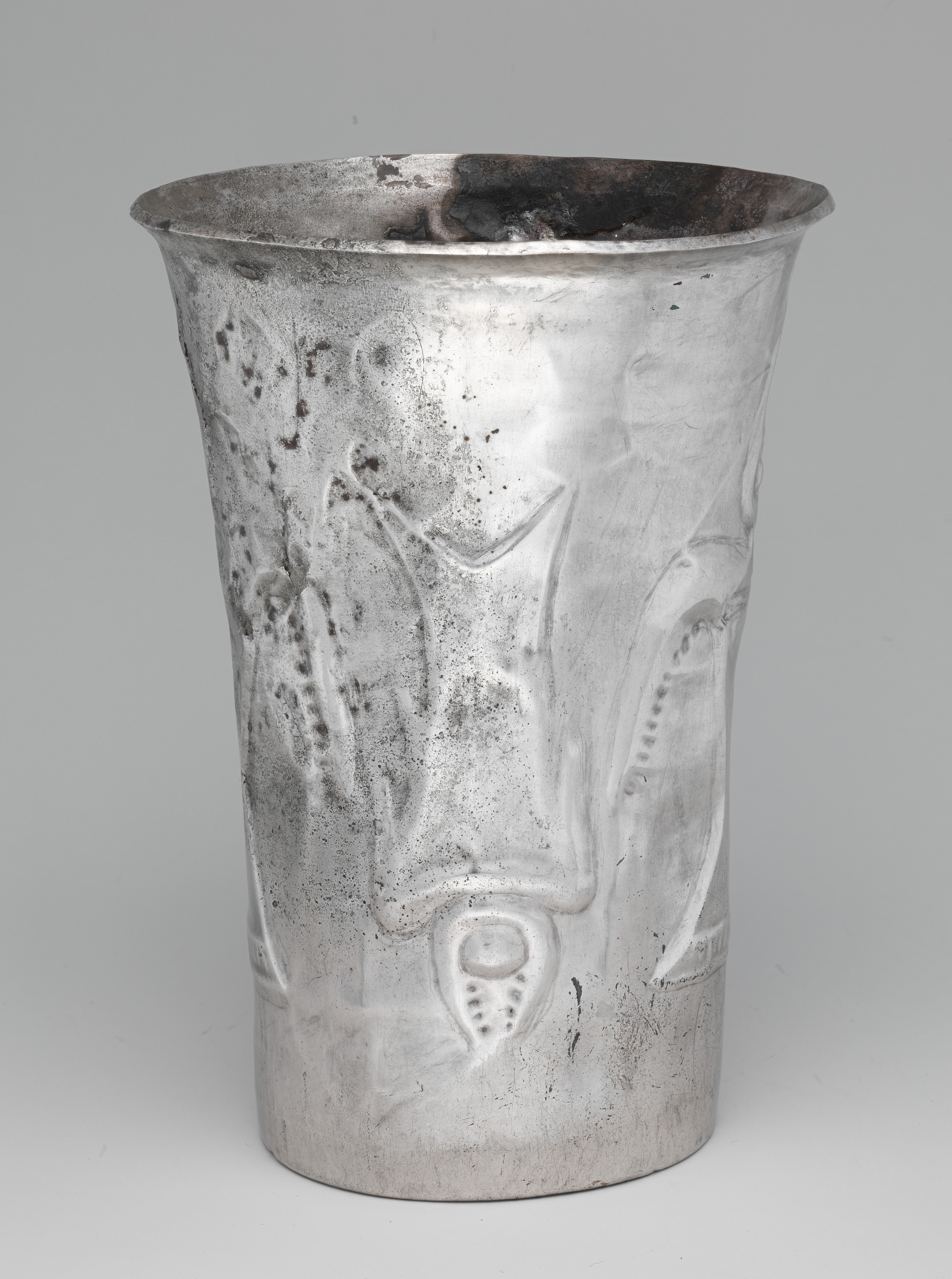Beaker
Unlike gold, which was available as nuggets and flakes in alluvial deposits and worked by metal artists of Peru’s North Coast since at least the first millennium BCE, working silver was a more complex process. Silver had to be sourced in veins in the highlands and then smelted (separated from other minerals) and refined. Chimú metalsmiths used the metal to create items of personal adornment, but it was especially popular for drinking and serving vessels such as this flaring beaker with repoussé imagery. The overall concept of this beaker suggests an effigy vessel (see, for example, MMA 1978.412.171), and elements of the body are present, such as a face, necklace, chest ornament and genitals on front, and, in the back, a large crescent surmounted by a bird, a herringbone spine, and a double crescent representing buttocks.
This vessel was reportedly part of a large group of silver objects recovered from a single site on Peru’s North Coast—in one account, the site of Mocollope, in the Chicama Valley; in another, in the Moche Valley, near Chan Chan, capital of the Chimú kingdom. The group includes a range of forms, from plain beakers to containers in the form of human figures and animals. The group does not represent a cohesive set stylistically or technologically. Some vessels appear to have been made in different workshops or, as is the case with the present example, simply made in haste by apprentice metalsmiths.
Chimú leaders, and the lords of another North Coast dynasty, known as Lambayeque or Sicán, dedicated far more resources to the creation of impressive drinking vessels in silver and gold than their predecessors. The presence of such a large number of capacious beakers speaks to a reorientation in ritual practice toward larger, more inclusive gatherings. Filled with maize beer, known as chicha, such vessels were part of convivial celebrations that were the building blocks of community formation. Drinking rituals were about communing with divine powers, but they were also about establishing, strengthening, and delineating relations among humans.
Joanne Pillsbury, Andrall E. Pearson Curator, Arts of the Ancient Americas, 2025
References and Further Reading
Pillsbury, Joanne. “Drinking with Dead Kings: Ritual and Rulership in the Kingdom of Chimor. World Art, 15(1)(2025): 193–228. https://doi.org/10.1080/21500894.2025.2449865
Topic, John R. “Craft Production in the Kingdom of Chimor.” In The Northern Dynasties: Kingship and Statecraft in Chimor, edited by Michael E. Moseley and Alana Cordy-Collins, 145–76. Washington D.C.: Dumbarton Oaks Research Library and Collection, 1990.
Zori, Colleen. “Valuing the Local: Inka Metal Production in the Tarapacá Valley of Northern Chile.” In Making Value, Making Meaning: Techné in the Pre-Columbian World, edited by Cathy Lynne Costin, 167–92. Washington, D.C.: Dumbarton Oaks Research Library and Collection, 2016.
This image cannot be enlarged, viewed at full screen, or downloaded.
This artwork is meant to be viewed from right to left. Scroll left to view more.





